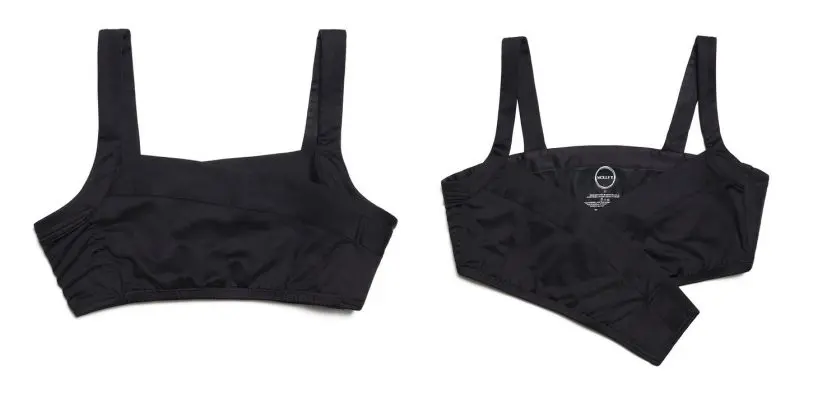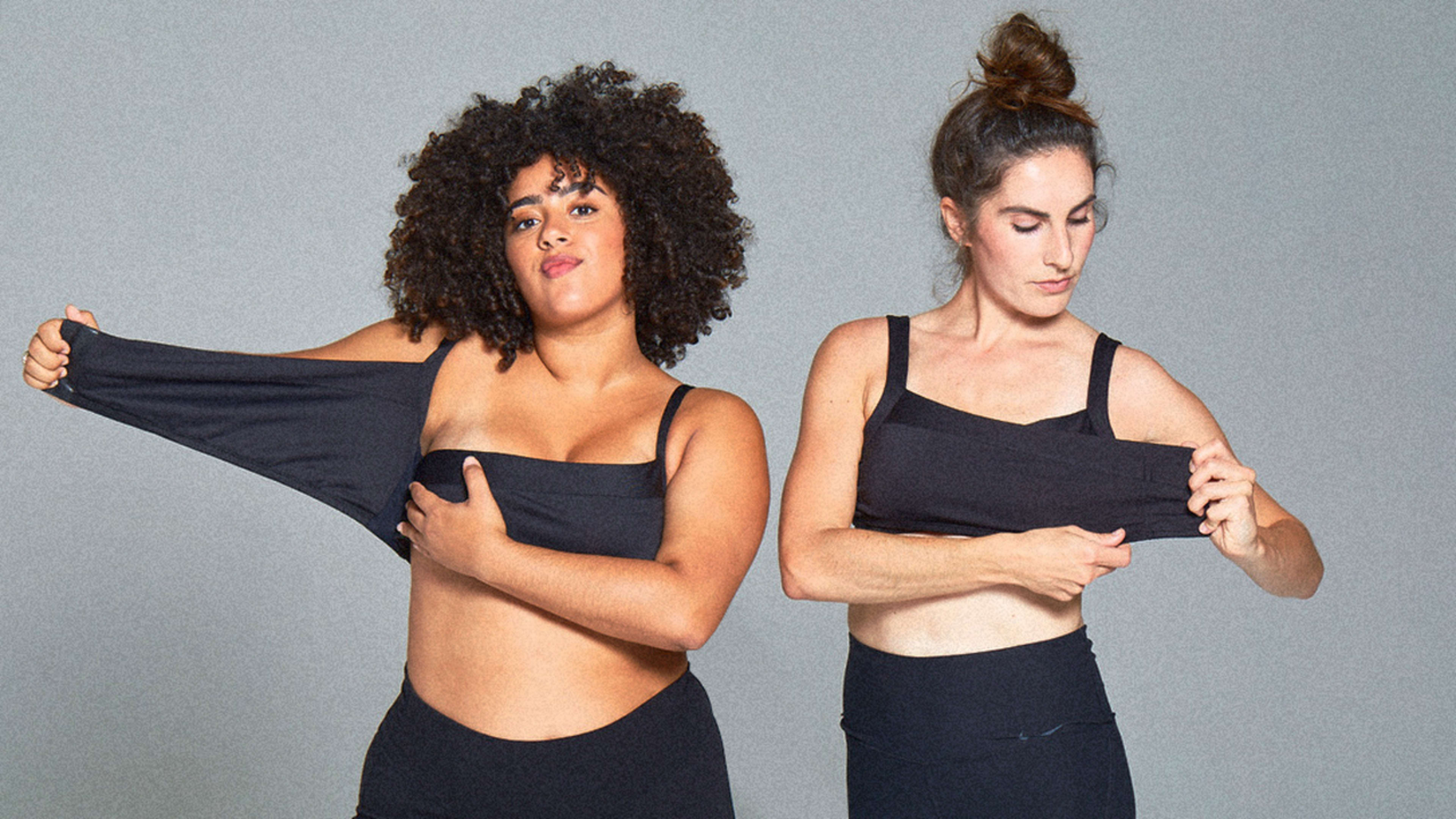Women’s breasts are not static. They’re constantly changing over the course of their lives, months, even days. A college athlete might go from playing soccer to sitting for a two-hour lecture. A woman might have sensitive breasts during PMS, then feel normal a few days later. A new mother will need to breastfeed for months, or even years. And yet, the $7.2 billion bra industry doesn’t create garments that are designed to adapt to women’s changing bodies, so women will have to buy different bras for each of these occasions.
Molly O’Connor wants to fundamentally redesign the bra through her startup Molly T. She’s created a patented new design that is much more like a wrap than a corset, with two straps that lay across your front, so that you can adjust to the level of compression that you need. The bra costs $98 and is available through the Molly T website. It comes in sizes that range from small to extra-large, but within each size, you can choose to loosen or tighten it for comfort. “I wanted to create a bra that you could adapt to meet your needs at the moment,” she says.

O’Connor first came up with the idea in college, where she was a Division 1 soccer player. Locker room conversations usually involved heated discussions about how their bras were not working. Many players with larger breasts, like O’Connor herself who wears a C-cup, there was no bra on the market that would do the trick, so they had to jerry-rig a bra that actually worked for them. “Some of the players on my team wore two sports bras, one on top of the other, to get the support they needed,” says O’Connor. “But then off the field, your bra is excruciatingly tight.”
O’Connor has spent years pondering why bras aren’t working for most women. And it occurred to her that it has something to do with their fundamental design, which hasn’t changed considerably over potentially hundreds of years. “Bra manufacturers seem to be making incremental changes to the same basic structure,” says O’Connor. “But they’re not rethinking them in any profound way.”
She has a point. The modern bra was patented in 1914, using a ribbon and two handkerchiefs. But even that design was based on an existing design for the corsets that women have been wearing since the 1500s. At their core, bras are designed with a clasp at the back that creates a tight band under the breasts, along with straps that hold the bra up. The rest of the bra, from the fabric to the wiring, is provide to create shape, structure, and support.
The bra industry is teeming with big players like Victoria’s Secret, and upstarts like ThirdLove, Harper Wilde, and Lively, who collectively flood the market with thousands of new bras every season. While each brand has tackled some aspect of comfort or fit, few have created a bra with as much versatility as the Molly T. There’s also been a lot of innovation in the realm of sports bras over the last couple of years. Reebok created a bra that uses a material devised by NASA that stiffens in motion, then loosens again when you’re not moving. As I reported this week, Lululemon has created a layering system that allows you to wear a vest on top of your bra for more support.
With the Molly T bra, O’Connor wants to provide a similar level of adaptability, but in a bra that can be worn outside of sports. It is actually more inspired by the kind of traditional breast-binding wrap used in parts of India, Japan, and Africa that provides an adjustable level of support using soft cloth. To make the Molly T bra, O’Connor found a material called Chitosante, which is moisture-wicking and sweat-absorbing. It contains the only antibacterial bioagent that is certified by the U.S. Environmental Protection Agency (EPA). You attach the straps to the front using a thin layer of velcro. She created many prototypes, which she tested on a wide range of women, including athletes. She launched the final bra in beta several months ago, and is now ready to introduce the bra to a wider audience through her website. She’s open to going into retail as well, when the time is right.

When I tested the Molly T bra, I found it intuitive to put on, which is important, given that many bras are very difficult to wear. Many women have found themselves stuck trying to get their arms and heads inside a tight-fitting sports bra, with no choice but to call someone to set them free. And rather than a traditional bra with a clasp in the back, all of the adjustment with this bra happens up front, where you can easily manage it. In other words, the easy user experience of the bra is a major selling point.
The wrap on the front does indeed provide a wide range of support, which is useful. I wore it to a high-intensity workout in a very compressed configuration, then loosened it for a yoga class. I wore it on a regular day, too. The bra creates a V-neck, which means that it doesn’t reveal much cleavage and has a flattening effect. I didn’t find this a problem, but some women might. And finally, if the velcro strip was not exactly in place, it would create a bit of friction against my skin, which was a little uncomfortable, but could be easily fixed.
The bottom line, though, is that I would have really enjoyed a bra like this throughout my pregnancy and breastfeeding years. Many women’s breasts become more sensitive and change in size when they are pregnant, due to an influx of hormones. Afterwards, breastfeeding comes with many challenges, including being able to nurse easily on demand. The design of the Molly T bra is flexible enough to accommodate all of this, which is perhaps why pregnant and nursing women have flocked to the design, according to O’Connor. “Each woman’s body is different, and the idea was to create a bra that a woman could adapt to suit her own needs,” she says. “This is particularly useful during the changes that come with childbirth, but really, women’s bodies are constantly changing.”
Recognize your brand’s excellence by applying to this year’s Brands That Matter Awards before the early-rate deadline, May 3.
